Themed collection Chemistry of 2-dimensional materials: beyond graphene

Concluding remarks: Chemistry of 2-dimensional materials: beyond graphene
The Faraday Discussion “Chemistry of 2-dimensional materials: beyond graphene” has been an incredible showcase for a variety of highly interesting contributions in the field.
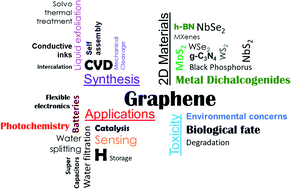
Faraday Discuss., 2021,227, 383-395
https://doi.org/10.1039/D1FD00007A
Enhanced liquid phase exfoliation of graphene in water using an insoluble bis-pyrene stabiliser
Pyrene derivatives with extremely low solubility can be exceptionally efficient as exfoliating agents.
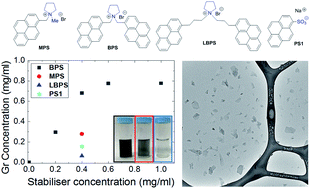
Faraday Discuss., 2021,227, 46-60
https://doi.org/10.1039/C9FD00114J
Autoperforation of two-dimensional materials to generate colloidal state machines capable of locomotion
Micro-array printing, inversion moulding and electrodeposition are used to pattern catalytic Pt-layers on graphene-encapsulated microparticles, enabling their locomotion in H2O2.

Faraday Discuss., 2021,227, 213-232
https://doi.org/10.1039/D0FD00030B
DNA-driven dynamic assembly of MoS2 nanosheets
We demonstrate a strategy to drive the assembly of molybdenum disulfide nanosheets and their disassembly in response to different stimuli.

Faraday Discuss., 2021,227, 233-244
https://doi.org/10.1039/C9FD00118B
Raman spectroscopy of GaSe and InSe post-transition metal chalcogenides layers
We investigate exfoliated layers of InSe and GaSe ranging from bulk crystals down to monolayer, encapsulated in hexagonal boron nitride, using Raman spectroscopy.
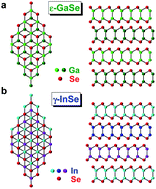
Faraday Discuss., 2021,227, 163-170
https://doi.org/10.1039/D0FD00007H
Spiers Memorial Lecture
Nanographenes and graphene nanoribbons are unique connectors between the domains of 1D-conjugated polymers and 2D-graphenes. They can be synthesized with high precision in solution and on-surface, and serve as ideal objects for nanoscience.
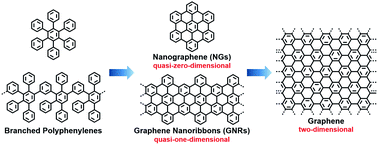
Faraday Discuss., 2021,227, 8-45
https://doi.org/10.1039/D0FD00023J
Multifunctional coatings of exfoliated and reassembled graphite on cellulosic substrates
This paper describes different applications of exfoliated and reassembled graphite (ERG) that may contribute to increasing the strategic and economic impact of 2D materials.
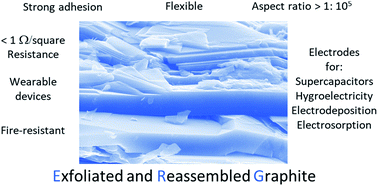
Faraday Discuss., 2021,227, 105-124
https://doi.org/10.1039/C9FD00109C
Biodegradation of graphene materials catalyzed by human eosinophil peroxidase
The enzymatic activity of eosinophil peroxidase secreted by human immune cells leads to degradation of different sources of graphene oxide.
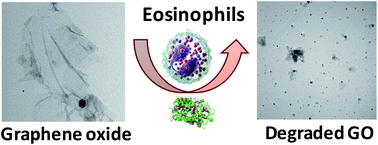
Faraday Discuss., 2021,227, 189-203
https://doi.org/10.1039/C9FD00094A
Computational design of graphitic carbon nitride photocatalysts for water splitting
We investigated the electronic structures of novel graphitic carbon nitride-based materials by replacing the nitrogen linker with heteroatoms or aromatic groups.
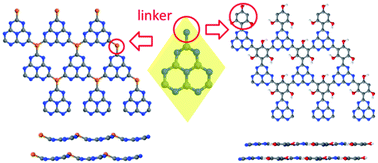
Faraday Discuss., 2021,227, 341-358
https://doi.org/10.1039/C9FD00147F
Core–shell graphene oxide–polymer hollow fibers as water filters with enhanced performance and selectivity
Graphene oxide (GO) coated hollow fiber filters could selectively capture three target water contaminants. The separation mechanism relies on synergic physical size exclusion and intercalation of solute 6 molecules between GO layers
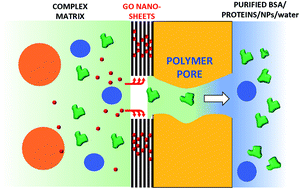
Faraday Discuss., 2021,227, 274-290
https://doi.org/10.1039/C9FD00117D
Synthesis of metallic mixed 3R and 2H Nb1+xS2 nanoflakes by chemical vapor deposition
Systematic study of the effect of chemical vapor deposition conditions on the incorporation of Nb interstitials between NbS2 layers.
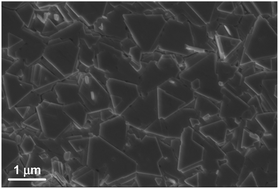
Faraday Discuss., 2021,227, 332-340
https://doi.org/10.1039/C9FD00132H
White graphene quantum dots as electrochemical sensing platform for ferritin
Novel use of hexagonal boron nitride quantum dots (hBN QDs) for electrochemical detection of ferritin.
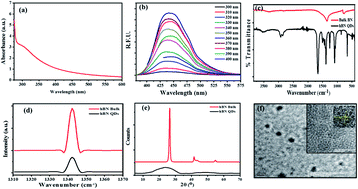
Faraday Discuss., 2021,227, 204-212
https://doi.org/10.1039/C9FD00111E
Printable hexagonal boron nitride ionogels
We describe aerosol jet-printable ionogels with high ionic conductivities and mechanical strengths using exfoliated hexagonal boron nitride (hBN) nanoplatelets as the solid matrix.
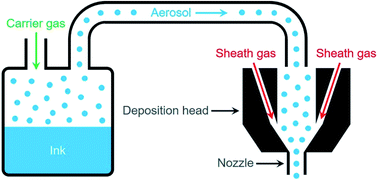
Faraday Discuss., 2021,227, 92-104
https://doi.org/10.1039/C9FD00113A
Electrochemical exfoliation of graphite in H2SO4, Li2SO4 and NaClO4 solutions monitored in situ by Raman microscopy and spectroscopy
In situ Raman spectroscopy was used to monitor the electrochemical exfoliation processes on graphite in various electrolytes.
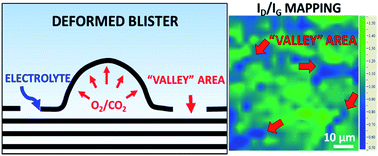
Faraday Discuss., 2021,227, 291-305
https://doi.org/10.1039/C9FD00123A
Sol–gel synthesis of 2-dimensional TiO2: self-assembly of Ti–oxoalkoxy–acetate complexes by carboxylate ligand directed condensation
2-Dimensional TiO2 is synthesized for the first time by a sol–gel self-assembly of Ti–oxoalkoxy–acetate complexes.
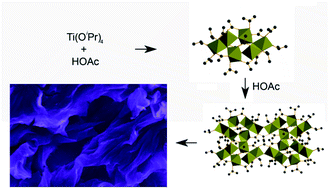
Faraday Discuss., 2021,227, 125-140
https://doi.org/10.1039/C9FD00108E
Stability and universal encapsulation of epitaxial Xenes
We propose a sequential Al2O3 encapsulation of silicene as a solution to degradation, that can be extended to the general case of epitaxial Xenes on substrates.
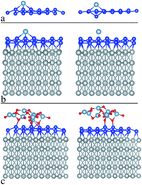
Faraday Discuss., 2021,227, 171-183
https://doi.org/10.1039/C9FD00121B
Graphitic carbon nitrides as platforms for single-atom photocatalysis
Adding single metal atoms to graphitic carbon nitrides alters their properties, impacting their use in photocatalysis.
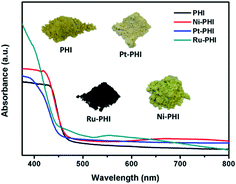
Faraday Discuss., 2021,227, 306-320
https://doi.org/10.1039/C9FD00112C
Low-energy electron irradiation induced synthesis of molecular nanosheets: influence of the electron beam energy
Electron irradiation induced synthesis of molecular nanosheets from aromatic self-assembled reveals different mechanisms depending on the applied beam energy.
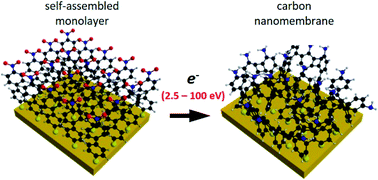
Faraday Discuss., 2021,227, 61-79
https://doi.org/10.1039/C9FD00119K
Facile assembly of layer-interlocked graphene heterostructures as flexible electrodes for Li-ion batteries
Electrochemically exfoliated graphene–metal oxide hybrids with a unique layer-interlocked structure were assembled and explored as flexible electrodes for Li-ion batteries.
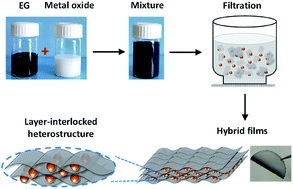
Faraday Discuss., 2021,227, 321-331
https://doi.org/10.1039/C9FD00120D
Graphene-supported 2D cobalt oxides for catalytic applications
Graphene-supported, highly reduced, high surface area CoO thin films, produced by straight-forward NaBH4 reduction of cobalt nitrate in a sonicated DMF suspension of bulk graphite, are highly active for low temperature CO oxidation.
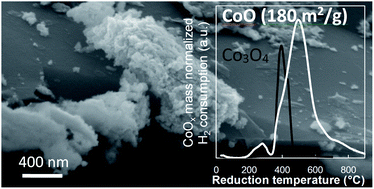
Faraday Discuss., 2021,227, 259-273
https://doi.org/10.1039/C9FD00110G
The philosophy of carbon: meso-entropy materials
The meso-entropy concept is proposed to re-understand the material world and to develop new carbon-rich materials.
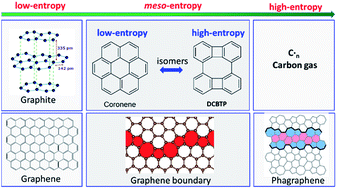
Faraday Discuss., 2021,227, 80-90
https://doi.org/10.1039/C9FD00115H
2D materials production and generation of functional inks: general discussion
Faraday Discuss., 2021,227, 141-162
https://doi.org/10.1039/D1FD90002A
Biomedical applications: general discussion
Faraday Discuss., 2021,227, 245-258
https://doi.org/10.1039/D1FD90003J
3-Dimensional graphene-like structures and applications: general discussion
Faraday Discuss., 2021,227, 359-382
https://doi.org/10.1039/D1FD90007B
Applications in opto-electronics: general discussion
Faraday Discuss., 2021,227, 184-188
https://doi.org/10.1039/D1FD90006D
About this collection
We are delighted to share with you a selection of the papers associated with a Faraday Discussion on the chemistry of 2-dimensional materials: beyond graphene. More information about the related event may be found here: http://rsc.li/2dmaterials-fd2020. Additional articles will be added to the collection as they are published. The final versions of all the articles presented and a record of the live discussions will be published after the event.
Graphene has extraordinary chemical and physical properties ensuring its use in opto-electronics, energy and biomedical applications. One of the greatest challenges is to develop and master chemical strategies for other 2D materials such as transition metal dichalcogenides. In nature one can find over 3000 layered compounds with different chemical compositions and structures thereby holding diverse physical properties.
This Faraday Discussion will cover all areas related to other 2D materials' chemistry spanning from their theoretical/computational prediction to their synthesis and functionalization yielding 2D and 3D systems with tailor made physical properties - for composites, foams and coatings, membranes, (bio)sensing, (electro- and photo-)catalysis, energy conversion, harvesting and storage, (opto)electronics, nanomedicine and biomaterials.